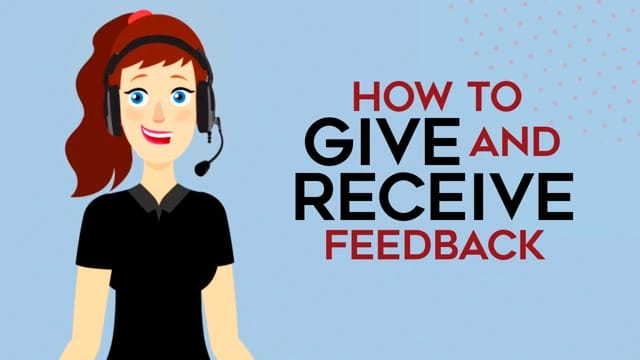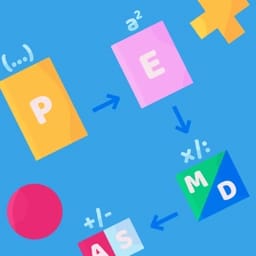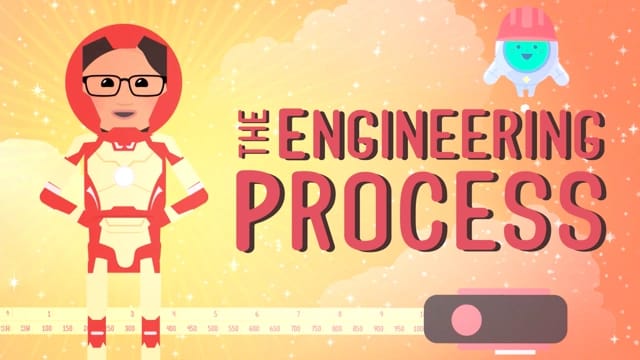13 Tips for managing large class sizes
In this guide
- Challenges of teaching large classes
- Strategies for managing large class sizes
- Effective use of classroom resources
- The organisation of space depends on several factors, which the teacher may or may not have control over, including:
- Encouraging individual attention and feedback
- Building a positive classroom community
- Sources
Managing large class sizes can be a daunting task, but, with a few adjustments, this does not need to be the case. Like many other challenging aspects of education, class size management often just takes a little creativity.
Challenges of teaching large classes
Among the challenges of a large class are the issues of:
- Time management,
- Space management and logistics,
- Difficulty giving individual attention, and
- How to effectively assess and monitor student learning.
Time management is perhaps the greatest concern in a classroom with a large number of students. Giving time to each student, providing quality instruction, and fulfilling all of the obligations placed on teachers can be overwhelming. The hope is that this article provides a few practical tips to combat this obstacle.
Space management is another concern. Some teachers are fortunate to have a large space that more readily accommodates a lot of students, but that is not always the case. Using space effectively can create a flow that aids the teacher in delivering more effective lessons.
Within a large class, individual attention is harder to guarantee. Students who are quiet or shy can get lost and easily ignored. The students who do not struggle and can usually learn on their own are often not challenged to the level that they need for growth. It can also fall to teachers to be crowd controllers rather than educators. Often a teacher must focus on getting the most information to the largest number of students and those students on the margins, unfortunately, become overlooked.
Finally, within a large class, it can be difficult to effectively assess and monitor student learning. Teachers can, understandably, become overwhelmed with the amount of marking that comes with large classes. As an English teacher myself, it can be exhausting to mark a huge pile of essays on a regular basis. Ensuring that all students are mastering content becomes a more extensive and time-consuming task with more students.
Just because something is challenging however does not mean that it cannot be overcome. The strategies in this article will address many of these challenges and provide practical ways to alleviate some of the stress of large classes.
Strategies for managing large class sizes
1) Intentional grouping

One way that teachers can manage large class sizes is through intentional grouping. Groups can serve different purposes and are flexible. This classroom setup allows the teacher to focus their attention on group needs.
Mixed ability groups where there is one high student, one middle high student, one middle student, a middle low student, and a low student is optimal. This configuration varies according to the number of students in the class and their levels.
You could also structure your groups to accommodate skill levels in different subjects so that you can focus and target different abilities more easily.
Group learning followed by individual group members acting as ‘teachers’ for other groups is another strategy that can be utilised. In this way, students are ensuring their own knowledge and understanding by passing it on to their peers, whilst the rest of the group is listening and interacting before passing on their own information.
Behaviour and personalities also play a role in how you group students. Students that cause conflict clearly should not be placed together.
Using formative assessment data such as exit tickets and work samples can help the teacher determine appropriate grouping for their subject and cohort.
2) Roles in group assignments
Creating roles in group assignments can also help to alleviate some of the day-to-day pressure on the teacher. Roles help to bring order and stability to groups. Roles can also help to ensure that each person takes an active role in the group’s work and success.
Like intentional grouping, role assignment should be purposeful. Spend time with students discussing each role and how each role should appropriately contribute to a group. This also takes practice and routine but students will progressively become better at this new format.
Roles can also change according to the type of group work that is being conducted. A few examples of roles could be:
- The recorder,
- The scribe,
- The presenter,
- The researcher,
- Materials coordinator,
- Artist/illustrator,
- Timekeeper, and
- Technology expert.
Regardless of the role itself, each person must, of course, contribute to the group work and be an active member.
3) Providing answer keys, rubrics, and exemplars
Time management is one of the challenges of large class sizes that this strategy can address. Since the teacher cannot possibly be everywhere at once, providing answer keys, rubrics, and exemplars can allow the teacher to direct their time efficiently.
Providing an answer key can help to lower the amount of times a teacher is asked “Is this answer right?”
Answer keys can work in several ways:
- Including all answers,
- Including how to work some of the problems, or
- Including answers and how to work problems.
Answer keys raise the question, ‘What if my students just cheat?’
This is a legitimate question. Like many of the strategies in this article, teaching students the purpose of this strategy and how to use answer keys effectively can lessen this concern. If students are not using the answer keys for the intended purpose, it will be reflected during the assessment and the teacher can adjust accordingly.
Some types of assignments lend themselves to an answer key, but others, such as a critical analysis English essay, do not. In this case, giving students a rubric with an example essay or exemplar can be helpful. Students can then use the rubric and the exemplar as a model to structure their own response.
Having examples and answer keys allows the teacher to spend less time creating examples on the spot, repeating themselves or having students wait for them to answer simple questions and more time identifying needs and helping students. It also places the success of group projects and their own work onto the students themselves.
Effective use of classroom resources
1) Classroom setup
The physical space within a classroom can have a significant impact on the efficiency within that classroom. Well-organised spaces increase productivity and allow for teachers and students to manage resources and move around their well-resourced space with ease rather than difficulty.
The organisation of space depends on several factors, which the teacher may or may not have control over, including:
- The size of the classroom,
- The furniture in the classroom,
- Wall space,
- Available resources, and
- Placement of structures such as windows, bookcases etc.
One of the most important things to consider when setting up a classroom space is how you as the teacher will move within the space. Making sure that you can easily move between groups and desks makes it easier to monitor and reach students. You should be able to be in what is often referred to as the “power zone”. The power zone puts the teacher in close proximity to the students – whether they are in groups or working individually.
2) Employ vertical spaces
My husband is a secondary school maths teacher with classes that are typically at least 30 students. He routinely uses this strategy to help students interact, work effectively in groups, and for monitoring learning processes. It is one of his favourite ways to encourage thinking, group work, and manage large class sizes all at once.
- Groups of students are given problems to work on together. Typically at least two groups will have the same or a similar type of problem.
- One group works the problem at their desks or table. The other group works on the problem on the board.
- If students struggle with a step or have a question, they are encouraged to send a consultant to the other group.
- The consultant goes to the other group and takes note of their steps or asks questions before feeding the solution back to their own group.
This way, the students are using each other’s knowledge and understanding for learning while the teacher can observe. This strategy also allows the teacher to be working with a small group during this time.
This strategy takes time to ingrain effectively within a class but can pay off tremendously. Demonstrating this strategy and practising it multiple times will help it to be successful.
3) Easy materials access

A strategy to reduce time spent on non-teaching tasks is to make sure that materials are set up and readily accessible for students. This can take many forms depending on available space and resources.
Items like:
- Organisational totes for group materials,
- Easy access to paper and writing utensils, and
- Specified spaces for assignments to be turned in are all time-saving tools.
In my classroom, I have labelled drawers for pencils, pens, highlighters, markers, and paper and labelled trays for students to turn in work for each class period. These are organisational tools I have used since I began teaching more than sixteen years ago and it has always worked well.
At the beginning of the year, routines are set in place so students are familiar with where to access necessary resources. This also reduces the amount of times students are asking for items such as pencils or paper during my lesson.
Encouraging individual attention and feedback
One of the challenges of large class sizes is finding time to give individualised feedback to students. Teachers can create opportunities for individual attention and feedback by:
- Conducting “rounds” during student work time,
- Creating a help desk, and
- Through the effective use of exit tickets.
1) Rounds
This strategy has several names, but this is what I call them in my classroom!
Similar to a nurse or doctor making rounds in a hospital, this is a teacher’s opportunity to monitor and provide feedback to students.
While students are working in small groups, or working independently, the teacher walks around and makes observations about student work. When I have done this in my classroom, I have also taken a clipboard and filled out a chart similar to the one below:

I teach English, but I have seen this strategy used in maths, science, social studies and even art classrooms!
The teacher can then use the information from their rounds to provide individual feedback and support for students either on the spot, later in the lesson or after class. With a large class, the rounds can be broken up into more manageable sizes by rotating which students are observed.
2) Help desk
The teacher does not always have to be the one giving students individual attention and feedback! This strategy can be employed using the teacher, or teaching assistant.
During independent work time, provide a help desk where students can come up with questions. The help desk operator should have an answer key, notes, examples, and any other materials that will help them provide support for student questions.
Students can come to the “help desk” and ask specific questions. Like other strategies, this one takes practice and regular usage to be successful. Students must learn how to ask specific questions – not just “Is this right?” but more along the lines of “I have completed through step 3, but I do not know what to do next.” By asking specific questions, students can get focused help without taking the teacher away from other students.
Teaching students to ask focused questions is part of an inquiry-based learning classroom. It is a strategy that allows them to show what they do know and think critically to find answers to things that they are confused about or unable to understand.
3) Exit tickets
Exit tickets can be used to help the teacher to assess student learning.
Exit tickets consist of a question that helps the student process their learning and show mastery of the lesson topic. The best exit tickets are written because a written response helps students to synthesise and internalise their learning. However, sometimes an oral exit ticket may be required due to time restraints.
Scaffolding strategies can help all students respond to these questions effectively. For example, my beginning-level English learners benefit from sentence stems to begin their writing because they do not yet have the academic language skills needed to respond completely independently.
In maths or design and technology, a written exit ticket may consist of explaining how to solve a problem using order of operations or describing a process.
In an English class, a student may be responding to a text analysis question or making a claim from an argumentative text read during class.
A history exit ticket could explain the events that led up to a larger event.Through a review of the exit tickets, the teacher can determine which students are struggling and need a reteach or have mastered materials and need an extension. This article gives more ideas for closing the lesson, including exit tickets.
Building a positive classroom community
A positive classroom environment is vital regardless of the number of students, however, it can become more challenging when the class size is large.
Students may have a tendency to try to group with other students they are familiar with rather than meeting new ones. This may also result in students choosing friends rather than people with whom they productively work.
Group and team-building activities that encourage students to get to know each other and work effectively can increase the connections made in the classroom. The following activities are easy and quick, but provide a way for students to learn more about each other and to build connections within the classroom.
1) Group dice roll
Materials:
- Dice -one for each student,
- Small groups (4-5 students).
Directions:
The objective is to be the first group with all group members rolling all 6 numbers from their die.
- Each student has one die.
- As a group students roll their dice.
- When everyone has rolled a one, the group yells “one”.
- Groups proceed through until they get to six.
- The first group to six wins.
2) Marshmallow towers
Materials:
- 50-75 mini marshmallows per group,
- 100-125 toothpicks per group,
- 1 paper plate per group,
- Small groups (4-5 students per group)
Directions:
The object is to build the largest marshmallow/toothpick tower in a set amount of time.
- Give students 2 minutes to form a strategy.
- Give students 5 minutes to create the biggest tower using only marshmallows and toothpicks.
- The team with the tallest tower wins.
3) Paper airplane challenge

Materials:
- One piece of paper for each student,
- Masking tape,
- Measuring tape.
Directions:
The objective is to get the most distance for flying paper aeroplanes.
- Students create their aeroplanes.
- Create a line on the floor with the tape.
- Each group stands opposite the tape line and flies their aeroplanes.
- Add up the total distance for each student’s aeroplane.
- The team with the greatest distance wins.
4) Who are you block towers?
Materials:
- Jenga or block tower games (one per group is ideal, but not necessary),
- Permanent marker, get-to-know-you questions,
- Small groups (4-5 students per group)
Directions:
The objective is to get to know your classmates.
- Before playing, number the blocks and create a list of get-to-know-you questions. There should be enough questions for each block.
- Students play the game as usual, stacking the blocks and pulling one out without knocking the tower over.
- As each student pulls out their block, they look at the number and ask the corresponding question from the list.
Game suggestions:
- Laminate the questions or place in sheet protectors to be used again.
- This activity can be done multiple times throughout the year, not just as a beginning-of-the-year activity.
- Place students in different groups so they learn about the whole class.
Try other team building activities to vary your activities or suit your cohort.
Managing large class sizes is the reality for many educators, but it does not have to be overwhelming. A few adjustments and a little creativity can go a long way in making a large class more manageable and creating a positive classroom for all students.
Sources
- Cain, S., Laird, M., Cotten, S. and Ellspermann, J. (2021) The Fundamental 5 Revisited Exceptional Instruction in Every Setting. Monee, IL.
- Moses. L. and Ogden, M. (2017). What are the Rest of my Kids Doing? Fostering Independence in the K-2 Reading Workshop. Portsmouth, NH.: Heinemann. https://nerdybookclub.wordpress.com/2017/04/21/what-are-the-rest-of-my-kids-doing-fostering-independence-in-the-k-2-reading-workshop-by-lindsey-moses-meridith-ogden/
- Solution Tree Publishing. (2018). The Handbook for Embedded Formative Assessment. Bloomington, IN.: Solution Tree Press.

Mattie Farrer
briefcase iconAVID Site Coordinator / Content Curator
Mattie Farrer has been an educator in various grade levels and capacities during her career. She has a passion for supporting English learners and their language development. She also loves helping teachers reach all students.
Other posts
Want more content like this?
Subscribe for blog updates, monthly video releases, trending topics, and exclusive content delivered straight to your inbox.












